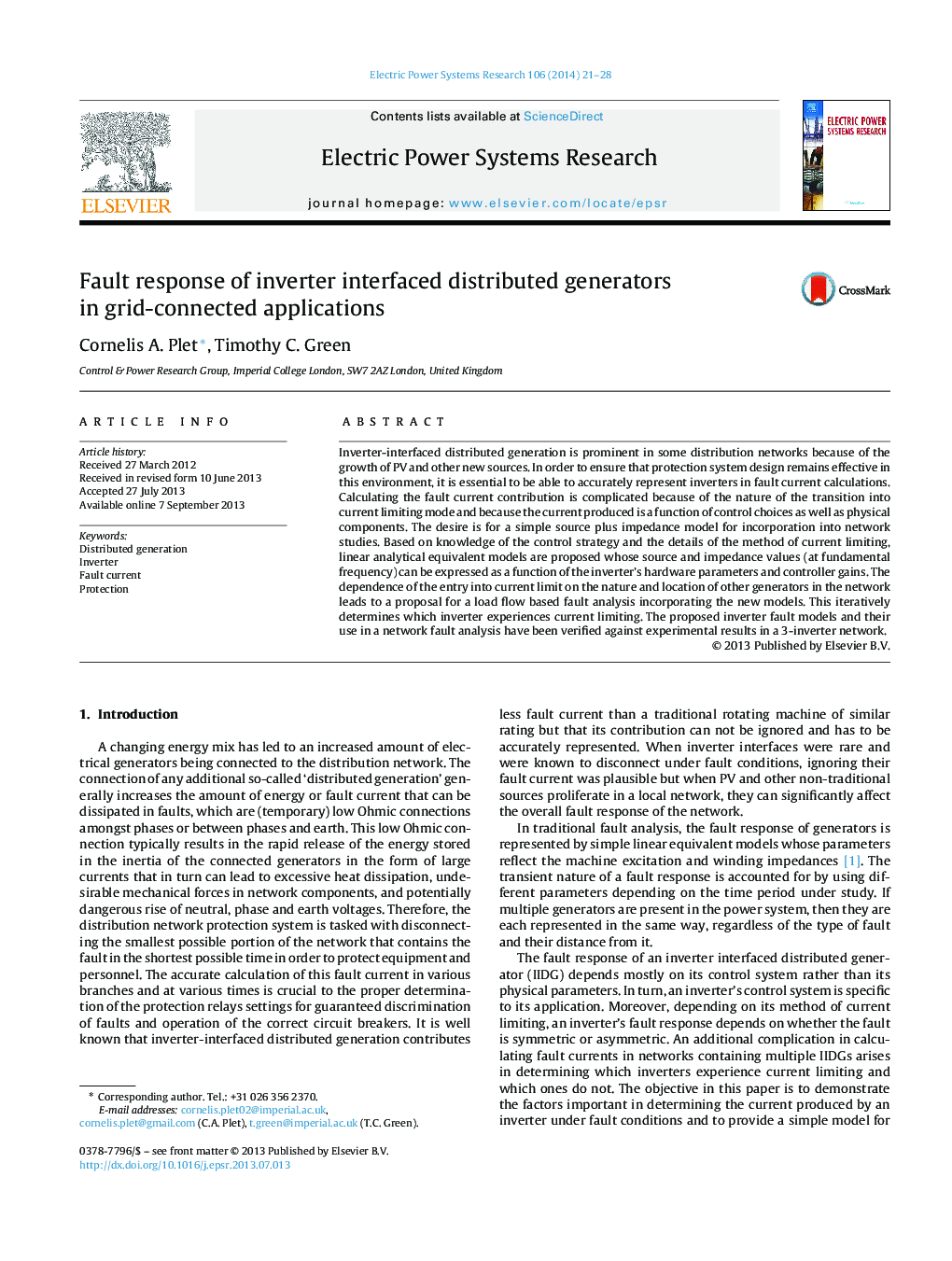| Article ID | Journal | Published Year | Pages | File Type |
|---|---|---|---|---|
| 703696 | Electric Power Systems Research | 2014 | 8 Pages |
•A linear fault model is presented for inverter interfaced distributed generators.•The fault model is compatible with traditional fault analysis techniques.•The proposed model takes into account the inverter control and current limiting strategy.•A method for studying a network with multiple grid-connected inverters is presented.•The proposed fault analysis techniques are verified against experimental results.
Inverter-interfaced distributed generation is prominent in some distribution networks because of the growth of PV and other new sources. In order to ensure that protection system design remains effective in this environment, it is essential to be able to accurately represent inverters in fault current calculations. Calculating the fault current contribution is complicated because of the nature of the transition into current limiting mode and because the current produced is a function of control choices as well as physical components. The desire is for a simple source plus impedance model for incorporation into network studies. Based on knowledge of the control strategy and the details of the method of current limiting, linear analytical equivalent models are proposed whose source and impedance values (at fundamental frequency) can be expressed as a function of the inverter's hardware parameters and controller gains. The dependence of the entry into current limit on the nature and location of other generators in the network leads to a proposal for a load flow based fault analysis incorporating the new models. This iteratively determines which inverter experiences current limiting. The proposed inverter fault models and their use in a network fault analysis have been verified against experimental results in a 3-inverter network.
